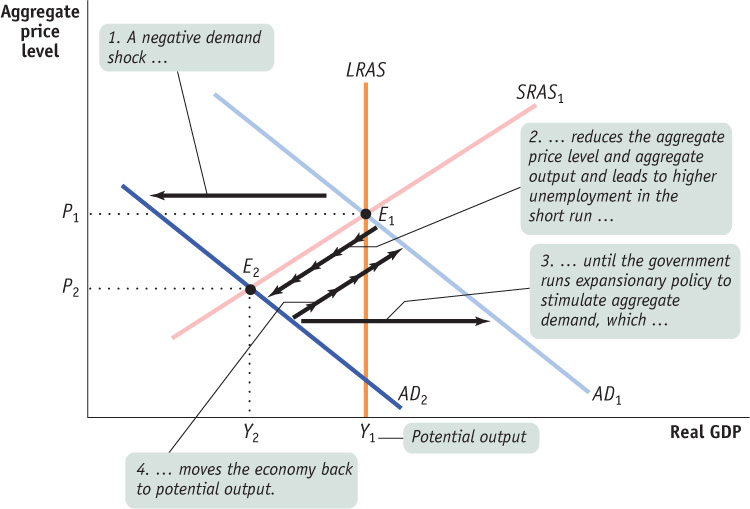
Figure12-21Stabilization Policy under a Negative Demand Shock Starting at E1, a negative demand shock shifts AD1 leftward to AD2. In the short run the economy moves to E2 such that aggregate price level falls to P2 and aggregate output falls to Y2. If the government responds to the negative demand shock by running an expansionary policy, such as an expansionary fiscal policy or monetary policy, aggregate demand increases back to its initial level, AD1. The economy returns to its initial equilibrium, E1: aggregate price level returns to P1 and aggregate output returns to potential output (Y1). Thus, stabilization policy can bring the economy back to potential output without causing falling prices and higher unemployment when there is a leftward (negative or adverse) shift in AD curve.
[Leave] [Close]